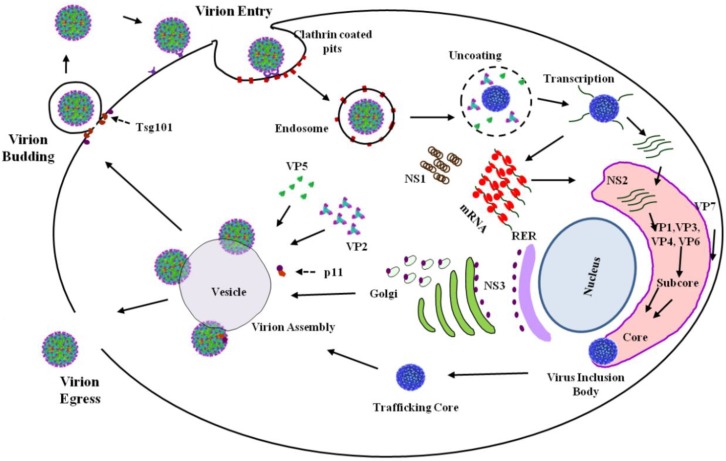Figure 2.
Overview of the BTV replication cycle. Virion entry is facilitated by the attachment of the outer-capsid protein VP2 to sialic acid prior to clathrin mediated endocytosis. Virion internalization leads to trafficking to endosomes where acidic pH facilitates VP5 mediated membrane permeabilization. This results in virion un-coating that releases the core into the cytoplasm. The cores become transcriptionally active, synthesizing and extruding viral mRNA for translation, leading to cellular morphogenesis via the non-structural proteins. NS1 promotes BTV ssRNA translation and subsequently forms tubules in the cytosol. NS2 assembles the viral inclusion bodies (VIBs) that concentrate viral proteins and newly synthesized ssRNAs for core assembly. Following core assembly and egress from VIBs, cores are trafficked on endocytotic vesicles by NS3 interaction with annexin/calpactin. Virion maturation is commenced by the core associating with VP5 and VP2 to form complete particles. Virions initially egress non-lytically during the early stages of infection via NS3 interacting with Tsg101, which leads to budding, prior to release by cell lysis. Adapted from [22].

